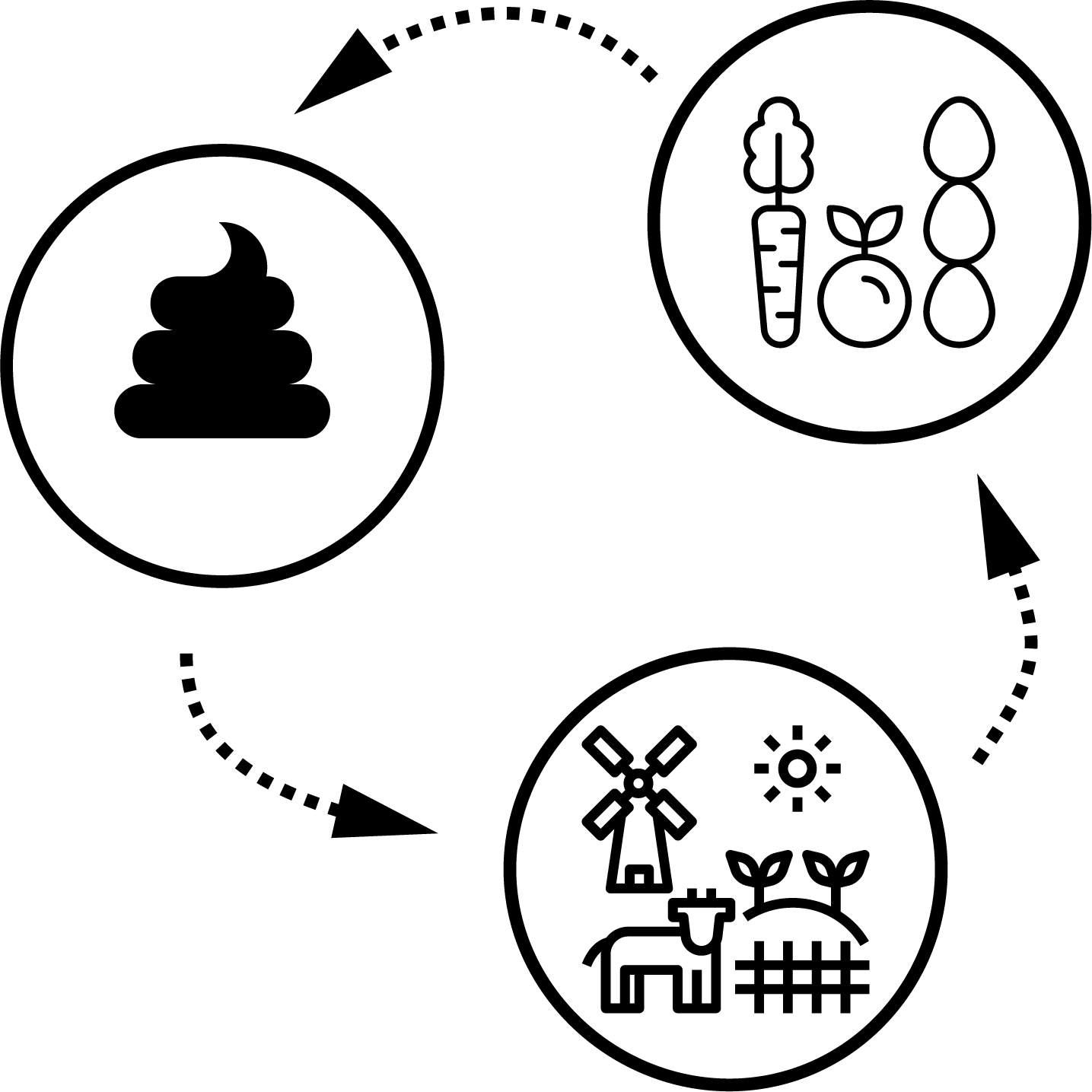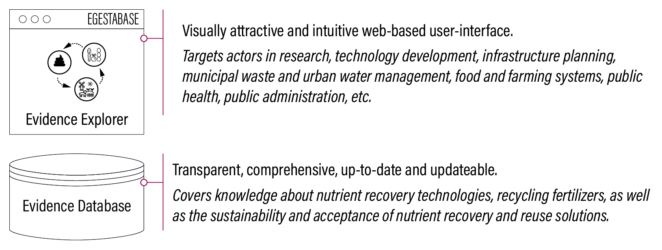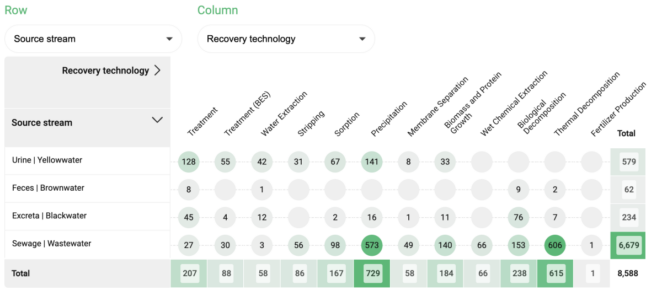EGESTABASE Tool

This tool is part of theSEIUrban Toolbox for Liveable Citieswhichhas been developed by theSEI Initiative on City Health and Wellbeing.The Urban Toolbox isa collection of tools, developed within SEI or in coordination with SEI,aimed at supporting planning and decision-making for improving the health, well-being and resilience of city residents and urban systems more broadly.
GO TO THESEIURBAN TOOLBOX FOR LIVEABLE CITIES HOMEPAGE
About this tool
EGESTABASE is an online platform that aspires to comprehensively map scientific evidence on the recovery of nutrients from human excreta and municipal wastewater and their reuse in agriculture. Research in this field has intensified over the past years, making it increasingly hard to navigate and keep track of. Searching works like on Scopus or Web of Science, just without the noise and with additional functionality.
This Urban Toolbox article is an abridged version of the original text which can be accessed from the END-OF-WASTEWATER project website. Please access the original text for more detail, research purposes, full references, or to quote text. To learn more about this tool, refer to the paper available to download on the right-hand side.
How does this tool work?
EGESTABASE strives to compile and integrate the latest knowledge on nutrient and carbon recirculation solutions from research and practice. So far, over 15 000 scientific papers have been mapped on the platform. These papers can be filtered by focus of the study, source stream, recovery technology, recovery product, target nutrient, and unit process. In addition, various technology options can be explored.
Who might use this tool?
EGESTABASE aims to support actors in research and practice who wish to explore and discuss different ways forward towards safe and more circular use of nutrients in human excreta and municipal wastewater.
Which stakeholders are involved?
Researchers; policymakers; urban planners.
What stage of the process does this tool support?
- Identifying solutions
- Knowledge dissemination
- Evidence synthesis
Background and rationale
One of the key prerequisites to achieving and maintaining global food security is improved nutrient management along the entire food chain, which includes farming practices, food processing, consumer behaviour, and waste management.
Research and development related to the recovery and reuse of nutrients and carbon in human excreta and municipal wastewater has intensified over the past years, continuously unfolding new knowledge and technologies. Nevertheless, research impact, knowledge transfer, and practical application at present are limited. In particular, uptake, implementation, and upscaling of new and innovative solutions remain a key challenge.
This is why the END-OF-WASTEWATER project team have set out to create anonline evidence platform intended to support and encourage acceptance, implementation and upscaling of innovative and sustainable solutions to recirculate nutrients and carbon from human excreta and other organic residuals to agriculture.
Tool overview
EGESTABASE consists of two parts: an evidence database and an evidence explorer.

Using the platform:
There are different ways in which a user can explore the online evidence-base:
- Literature search – use the search bar and bibliographic filters to find relevant scientific papers.
LIST – display the selected papers and explore the bibliographic information and the egestabase tags associated with each paper.
MAP – show the selected papers on a map to explore the spatial distribution of research activity.
TIMELINE – show the selected papers on a timeline to explore the temporal distribution of research activity.
HEATMAP – cross-tabulate the selected papers as a function of bibliographic information and the egestabase tags associated with each paper.

An example of cross-tabulating scientific papers. - Option space – explore and discover various ways to recover and reuse nutrients from human excreta and municipal wastewater; see how different technologies cluster together.
- Tutorial – explore and understand the different categories we have used to tag scientific papers: topic, source stream, recovery technology, recovery product, reuse, target nutrient, and unit process.
- Implementation examples – find examples where nutrient recovery and reuse have been implemented in practice; this section for now is limited to evidence from Sweden.
*Note that EGESTABASE v3 is still a beta version. Visualisations are experimental and the dataset is incomplete.
Applications:
The EGESTABASE platform aims to:
- Become a trusted source of knowledge that supports diverse actors around the world who wish to contribute to increased nutrient and carbon recirculation in a way that supports healthy water, soil, food, and people.
- Strengthen national and regional stakeholder relationships and collaborations, empowering stakeholders to jointly take action to develop, test, and implement innovative solutions that close nutrient cycles.
Capabilities and resources required
EGESTABASE is an online platform. This means that to access and explore the collated evidence and data, a personal computer with active internet connection is required.
Potential integration with other tools
EGESTABASE complements the “Compendium of Sanitation Systems and Technologies” and the “Guide to Sanitation Resource Recovery Products & Technologies“. Wherever possible, we have attempted to harmonise terminology.
Suggested Citation:
For the systematic map protocol:
Biljana, M., Thomas, J., Metson, G.S, McConville, J.R., Johannesdottir, S.L., Seddon, D. and Harder, R. (2021). Technologies for recovery and reuse of plant nutrients from human excreta and domestic wastewater: a protocol for a systematic map and living evidence platform. Environmental Evidence,10(20), https://doi.org/10.1186/s13750-021-00235-x
(0) Comments
There is no content